Specialties
Explore the different facets of diving, from learning to protect coral reefs to diving into mysterious caverns.
-
Deep diver
-
PADI Enriched Air Nitrox
-
Night Diving
-
PADI Peak performance Buoyancy
-
Reef Guardian
-
PADI Search and recovery
-
Sidemount Diver
-
Underwater Navigator
-
PADI Underwater Photography
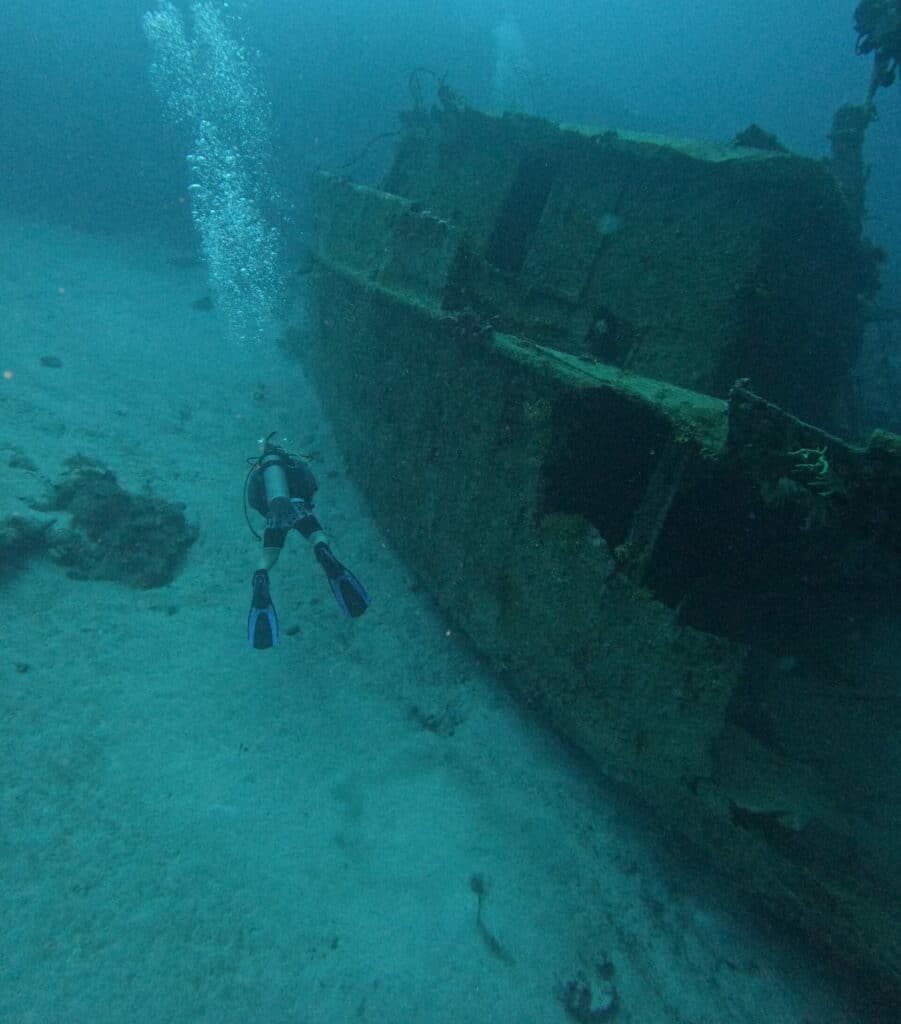
Why PADI Deep Diver Specialty?
Have you ever peered over a wall and wondered what's hiding just a bit deeper? The PADI Deep Diver specialty trains you to handle the increased risks of deep diving while exploring the hidden world that lies down to 40m/130ft. You can also extend your dives by combining it with the PADI Enriched Air Nitrox Specialty.
Deep diver
Course details
- Duration: 2 days
- Course Price $1.400.000 COP
- Includes all materials, dive gear and certification
Prerequisites
- Age 15
- PADI Advanced Open Water Diver (or other qualifying certification)
- PADI Enriched Air Nitrox (recommended, but not required)
What do I need to start?
You need to be at least 15 years old, and PADI Advanced Open Water certified (or equivalent certification from another organization). It is also recommended that you are PADI Enriched Air Nitrox certified, to make the most of extending your bottom times at depth.
How long will it take?
Plan for around two days for the knowledge development and the three dives. As you will be doing several deep dives in one day, you will be taking ample surface intervals between repetitive dives.
Where can I go from here?
Use your Deep Specialty to get the most out of exploring our deeper wrecks and bottomless walls. For those divers interested in Tec Diving, the PADI Deep Diver Specialty is a prerequisite to the DSAT Tec 40 course.
What will I do?
You will make three deep dives with your PADI instructor to maximum depths of 30 meters/100 feet, 24 meters/80 feet, and 40 meters/130 feet respectively. At depth, you will practice various deep diving skills including:
● Narcosis assessment
● Air consumption calculations
● Deep navigation
● Proper safety stops and emergency procedures
You will be certified as a PADI Deep Diver, to a maximum depth of 40m/130ft within no-stop limits.
What do I earn at the end?
You will be certified as a PADI Deep Diver, to a maximum depth of 40m/130ft within no-stop limits.

Why Enriched Air Nitrox?
If you've ever wanted to stay at depth longer than allowed by the no-decompression limits of air, then the PADI Enriched Air Diver specialty course is for you. Nitrogen is a big limiting factor on bottom time, but with Enriched Air Nitrox, we reduce the amount of nitrogen in the breathing mixture by enriching the air with extra oxygen, which results in extended no-decompression limits. Enriched Air Nitrox gives you more time to explore the diversity of San Andres`s reefs and walls.
PADI Enriched Air Nitrox
Course details
- Duration: 1 day
- Course Price $ 1.000.000 COP
- Includes all materials, dive gear and certification
Prerequisites
- Prerequisites: Age 12
- PADI Open Water Diver (or other qualifying certification)
Perfect for divers who want to maximize their bottom time! Due to the lower percentage of nitrogen in enriched air your body absorbs less nitrogen during the dive, allowing you to stay underwater longer and make the most out of your surface intervals.
What do I need to start?
You must be at least 12 years old and be certified as a PADI Open Water Diver (or other qualifying certification). It is preferred that you already be certified as PADI Advanced Open Water or be enrolled in the course in order to reach the depths at which Enriched Air Nitrox is most beneficial. To get the most out of your Nitrox dives, good air consumption is an added bonus.
Tell me about the Advanced Open Water option.
The PADI Advanced Open Water course includes dives that benefit from the extended bottom time from Enriched Air Nitrox. For example, at 33 meters/110 feet (the maximum depth of our two wrecks), you can reach a maximum bottom time of 25 minutes on EANx32 (32% O2, 68% N2), as opposed to 16 minutes on air (21% O2, 79% N2). Combine the PADI Enriched Air Diver course with PADI Advanced Open Water to get the most out of your dives!
Where can I go from here?
Diving, of course! You can request Enriched Air Nitrox tanks for your fun dives for only an additional COP $ 10.000 per tank. The extended bottom time of Enriched Air Nitrox is also excellent for many of the PADI Specialty Courses, especially Deep Diver and Wreck Diver. If you are thinking about Tec Diving, experience with Enriched Air Nitrox is one of the prerequisites to get started with DSAT Tec 40.
What will I do?
Enriched Air Nitrox carries a few additional risks due to the higher oxygen content, compared with air. The knowledge development sessions teach you how to analyze the oxygen content, anticipate the risk involved with oxygen, and plan your dives accordingly. In Blue Life our Nitrox course includes a 2 tank Nitrox dive for you to practice under direct supervision from our staff.
How long will it take?
PADI Enriched Air Diver can be completed in one day. Since the majority of the course consists of knowledge development, expect at least one full afternoon reviewing the dive planning section of the specialty. If you have an Enriched Air Nitrox compatible dive computer, you will learn how to use it to help you make the most out of your dives.
What do I earn at the end?
You will be certified for life as an Enriched Air (Nitrox) Diver, qualifying you to independently plan and conduct Enriched Air Nitrox dives with up to 40% Oxygen to a maximum operating depth of 1.4 ata O2 partial pressure.

Why PADI Night Diving Course?
As the sun sets, you don your dive gear, slip on your scuba mask and bite down on your dive regulator. A deep breath and you step off the boat – into the underwater night. Although you’ve seen this reef many times before, this time you drop into a whole new world and watch it come to life under the glow of your dive light.. Excellent when combined with the PADI and Under Water Navigation Course to find your way in to limited visibility scenario.
Night Diving
Course details
- Duration: 2-3 Days
- Course Price $ 800.000 COP
Prerequisites
- Age 10
- PADI Open Water Diver (or other qualifying certification)
What do I need to start?
PADI Open Water Diver (or other qualifying certification)
How long will it take?
The PADI Multilevel specialty can be done in as little as 2 days. It consists of four dives and a knowledge development session where we discuss the various techniques we will apply during the dives.
What do I earn at the end?
You will be certified as a PADI Night Diver, a testament to your enhanced Diving abilities.
What will I do?
- Night dive planning, organization, procedures, techniques and potential problems
- How to control your buoyancy at night
- Entries, exits and underwater navigation at night
- Nocturnal aquatic life, since many of the plants and animals you'll see are different
Where can I go from here?
Apply your increased skills to greater effect with the PADI underwater navigation Course. Continue building your experience with fun dives, where our daily dive schedule will enable you to explore the variety and challenges Of San Andre`s reefs and walls.
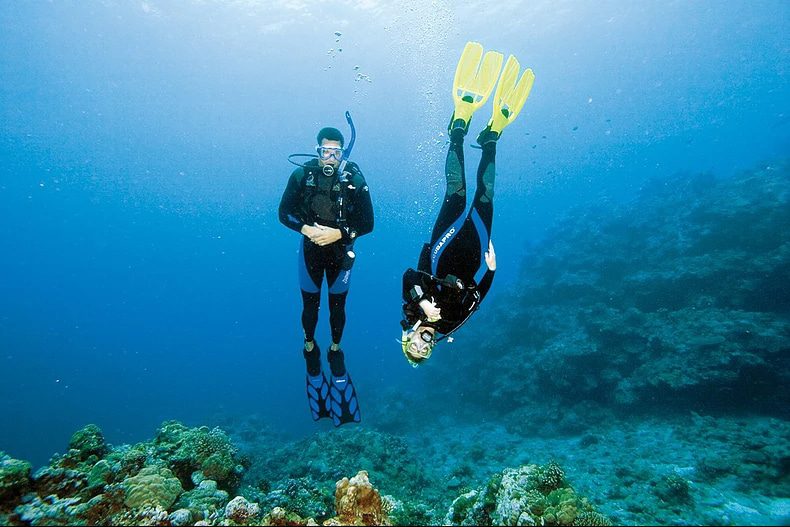
Why PADI PPB Specialty?
Excellent buoyancy control is what defines skilled scuba divers. You've seen them underwater. They glide effortlessly, use less air and ascend, descend or hover almost as if by thought. They more easily observe aquatic life without disturbing their surroundings. You can achieve this, too. The PADI Peak Performance Buoyancy Specialty course improves the buoyancy skills you learned as a new diver and elevates them to the next level.
PADI (Junior) Open Water Divers or higher, who are at least 10 years old, are eligible to take the Peak Performance Buoyancy course.
PADI Peak performance Buoyancy
Course details
- Duration: 1 day
- Course Price $ 700.000 COP
Prerequisites
Age 15
PADI Open Water Diver (or other qualifying certification)
Take This Course If You Want to
What do I need to start?
You need to be at least 12 years old, and PADI Open Water certified (or equivalent certification from another organization).
How long will it take?
Plan for around 1 day for knowledge development and another day for two dives where you are going to ´practice with a PADI Instructor..
What do I earn at the end?
You will be certified as a PADI Peak performance Buoyancy Specialty diver.
What will I do?
On this course you will: Determine how much weight you need and where to place trim weights to streamline your body position. During two dives you’ll fine-tune your weighting during buoyancy checks and master neutral buoyancy with water practice.
Where can I go from here?
Use your PPB certification towards the Master Scuba Diver Rating. or in conjunction with your Advanced open Water certification,
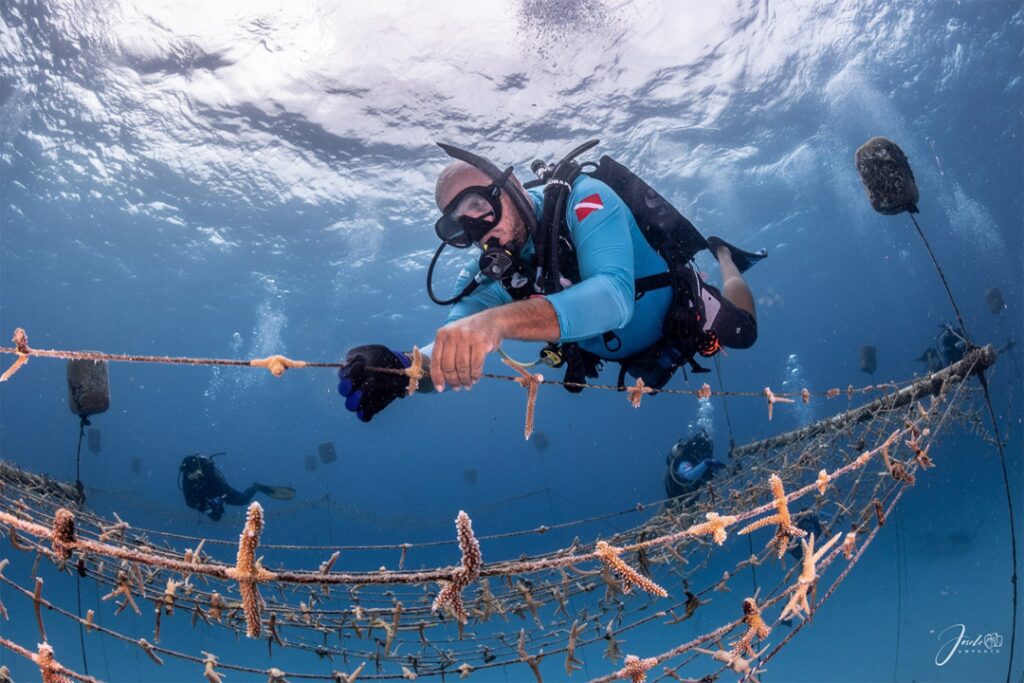
Why PADI Reef Guardian Diver Specialty?
This course helps you appreciate the complexity of coral reef habitats and teaches how you can help conserve these vital systems. We need your help to help on the several different coral nurseries in San Andres island.
Through classroom discussions, you learn:
PADI Coral reef guardian
Course details
- Duration: 3 days
- Course Price $ 1.290.000 COP
Prerequisites
Age 15
PADI Open Water Diver (or other qualifying certification)
What do I need to start?
You need to be at least 15 years old, and PADI Open Water certified (or equivalent certification from another organization). It is also recommended that you are PADI with a peak performance specialty certification.
How long will it take?
Plan for around 3 days for the knowledge development and the four dives.
What do I earn at the end?
You will be certified as a PADI Coral reef ´protector and also be a part of our team to help coral nurseries and restoration efforts.
What will I do?
On this course you will : learn the importance of coral reefs in the San Andres island area, you also will get involved in a coral restoration effort in two different coral nurseries on the island and, with the assistance of a marine biologist team, outplant a coral colony.
Where can I go from here?
Get involved and plan a vacation to volunteer with Blue Indigo foundation to help on their several coral restoration efforts. There is a lot of help needed.
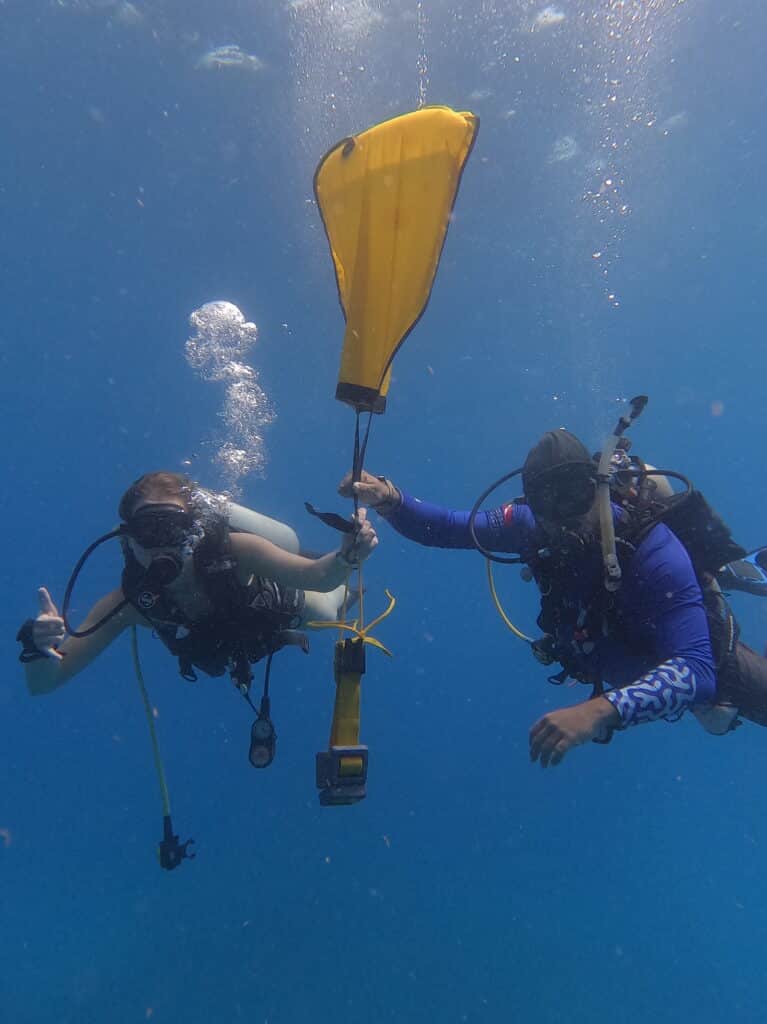
Why PADI Search and Recovery Course?
Have you ever dropped something in the water? Are you looking for lost “treasure”? The PADI Search and Recovery Diver Specialty course will teach you effective ways to find objects underwater and bring them to the surface. Small, large or just awkward, there is a way to bring them up. Excellent when combined with the PADI Underwater Navigation specialty, or at the end of your PADI Advanced Open Water Diver course to set you on the right track with your skills at the very start of your diving career.
PADI Search and recovery
Course details
- Duration: 2-3 Days
- Course Price $ 850.000 COP
Prerequisites
Age 10
PADI Open Water Diver (or other qualifying certification)
What do I need to start?
You need to be at least 10 years old, and PADI Advanced Open Water certified (or equivalent certification from another organization).
How long will it take?
The PADI Peak Search and Recovery specialty can be done in as little as 2 days. It consists of four dives and a knowledge development session where we discuss the various techniques we will apply during the dives.
What do I earn at the end?
You will be certified as a PADI Search and Recovery Diver, a testament to your enhanced navigation and search abilities.
What will I do?
● Search and recovery dive planning, organization, procedures, techniques and how to deal with potential problems
● How to locate large and small objects using search patterns
● How to use a lift bag and other recovery methods
● Limited visibility search techniques
Where can I go from here?
Apply your increased navigation and search skills to greater effect with the Rescue Diver courses. Continue building your experience with fun dives, where our daily dive schedule will enable you to explore the variety and challenges Of San Andre`s reefs and walls.
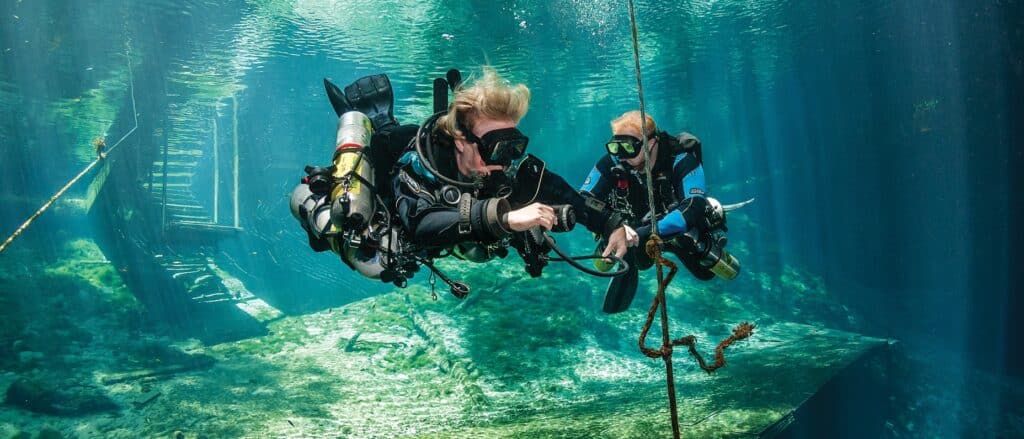
Why PADI Sidemount Diver Specialty?
Discover the balance and efficiency of sidemount scuba diving with your PADI dive instructor. Many divers find sidemount tanks are more comfortable and easier to put on in the water. Sidemount diving is also beneficial for divers who want improved balance and prolonged dives. Take the Sidemount diver course if you want to:
Sidemount Diver
Course details
- Duration: 3 days
- Course Price $ 1.300.000 COP
Prerequisites
Age 15
PADI Advanced Open Water Diver (or other qualifying certification)
PADI Enriched Air Nitrox (recommended, but not required)
What do I need to start?
You need to be at least 15 years old, and PADI Open Water certified (or equivalent certification from another organization). It is also recommended that you are PADI Enriched Air Nitrox certified, to make the most of extending your bottom times at depth.
How long will it take?
Plan for around 3 days for the knowledge development and the three dives. As you will be doing several deep dives in one day, you will be taking ample surface intervals between repetitive dives.
What do I earn at the end?
You will be certified as a PADI Sidemount Diver, to a maximum depth of 40m/130ft within no-stop limits.
What will I do?
On this course you will : learn how to Assemble and configure sidemount equipment, Mount scuba tanks in the water and your weights for optimal balance Frog kick to move easily while wearing sidemount.
Where can I go from here?
Use your Sidemount Specialty to get the most out of exploring our deeper wrecks and bottomless walls. For those divers interested in Tec Diving, the PADI Deep Diver Specialty is a prerequisite to the DSAT Tec 40 course.
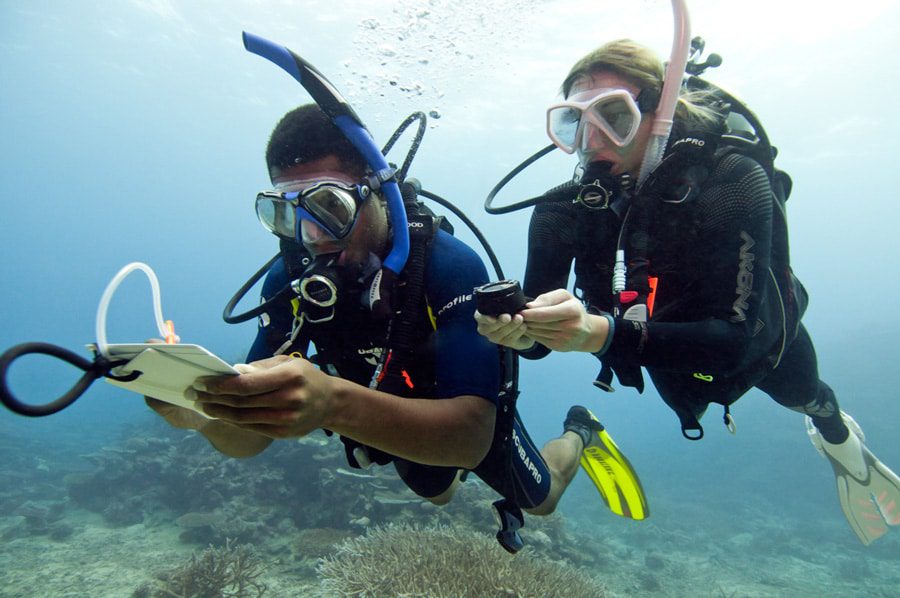
Why PADI Underwater Navigation Diving Course?
Be the diver everyone wants to follow and make your sense of direction legendary with the PADI Underwater Navigator Specialty course.Excellent when combined with the PADI Deep Diving specialty Course to complete your Advanced Open Water Certification.
Underwater Navigator
Course details
- Duration: 2-3 Days
- Course Price $ 700.000 COP
Prerequisites
Age 10
PADI Open Water Diver (or other qualifying certification)
What do I need to start?
PADI Open Water Diver (or other qualifying certification)
How long will it take?
The PADI Multilevel specialty can be done in as little as 2 days. It consists of two dives and a knowledge development session where we discuss the various techniques we will apply during the dives.
What do I earn at the end?
You will be certified as a PADI Underwater Navigator, a testament to your enhanced Diving abilities.
What will I do?
You learn
● Navigation patterns
● Natural navigation (without a compass)
● Underwater map making
● Compass navigation
● Underwater map making
● Dive site relocation
● How to estimate distance underwater
Where can I go from here?
Apply your increased navigation skills to greater effect with the Nitrox course. Continue building your experience with fun dives, where our daily dive schedule will enable you to explore the variety and challenges Of San Andre`s reefs and walls.
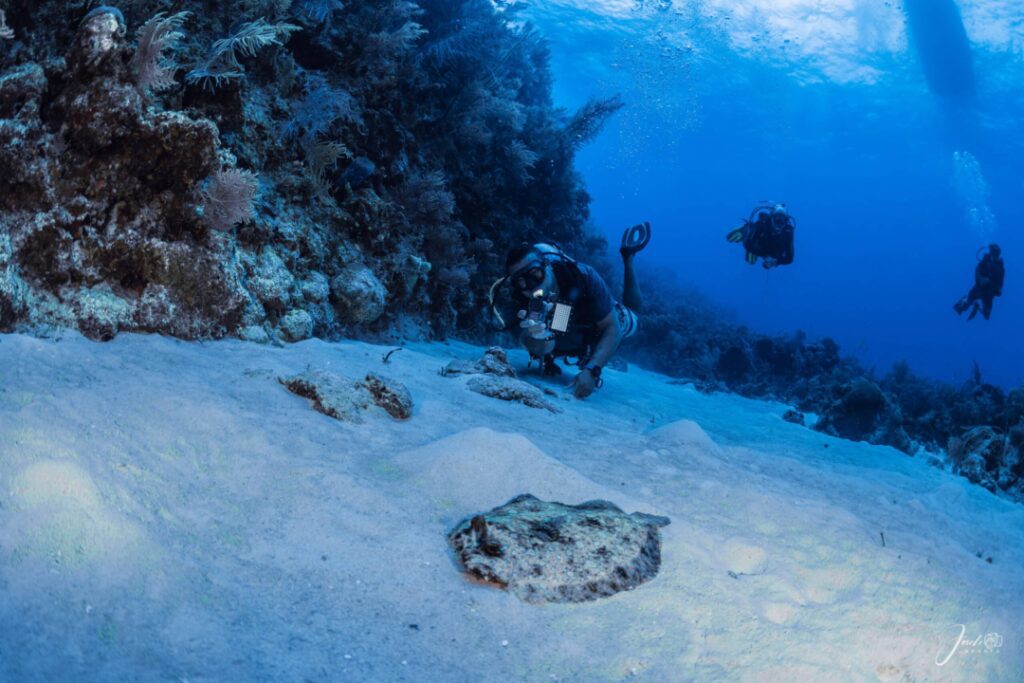
Why PADI Digital Underwater Photographer?
Capture your vacation memories! The PADI Digital Underwater Photographer specialty introduces you to basic photography techniques and terminology, allowing you to snap the best possible pictures underwater. Since buoyancy is a critical part of good underwater photography, you can enhance your photographs by combining the course with the PADI Peak Performance Buoyancy specialty. If you have just acquired a new underwater camera, this course will help you get the most out of it. We also have cameras available for rent; see our Rental Gear page for more information on camera rental.
PADI Underwater Photography
Course details
- Duration: 3 days
- Course Price $ 1.200.000 COP
Prerequisites
Age 10
PADI Open Water Diver (or other qualifying certification)
What do I need to start?
You need to be at least 10 years old, and be PADI Open Water certified (or equivalent certification from another organization), and a digital camera that can go underwater (or rent one from us). It is also extremely beneficial to have good buoyancy control, as this will greatly increase the quality of your underwater photos.
Where can I go from here?
Take more pictures underwater - practice makes perfect! Consult our Dive Schedule to organize dives for times that suit you. If you want to concentrate exlusively on photography during your dives, contact us for more information.
What will I do?
In the end, you will be certified as a PADI Digital Underwater Photographer, a widely accepted sign of your photography training.
● Picture composition
● ISO settings
● Aperture and shutter speed settings
● Flash vs available light photography
● Camera-handling techniques
This knowledge is applied on two open water dives where you will work with our experienced photography instructors to get the best results from your underwater adventures memories.
What do I earn at the end?
In the end, you will be certified as a PADI Digital Underwater Photographer, a widely accepted sign of your photography training.


